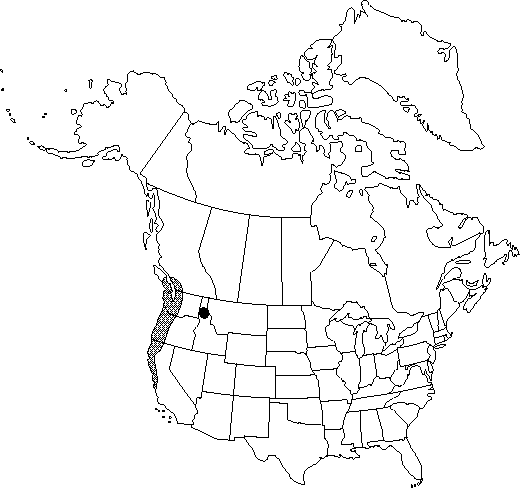Difference between revisions of "Berberis nervosa"
Fl. Amer. Sept., 219. 1814.
FNA>Volume Importer |
imported>Volume Importer |
||
| (6 intermediate revisions by 2 users not shown) | |||
| Line 12: | Line 12: | ||
}}{{Treatment/ID/Special_status | }}{{Treatment/ID/Special_status | ||
|code=F | |code=F | ||
| − | |label= | + | |label=Illustrated |
}} | }} | ||
|basionyms= | |basionyms= | ||
| Line 18: | Line 18: | ||
|name=Berberis nervosa var. mendocinensis | |name=Berberis nervosa var. mendocinensis | ||
|authority=Roof | |authority=Roof | ||
| − | }}{{Treatment/ID/Synonym | + | |rank=variety |
| + | }} {{Treatment/ID/Synonym | ||
|name=Mahonia nervosa | |name=Mahonia nervosa | ||
|authority=(Pursh) Nuttall | |authority=(Pursh) Nuttall | ||
| − | }}{{Treatment/ID/Synonym | + | |rank=species |
| + | }} {{Treatment/ID/Synonym | ||
|name=Mahonia nervosa var. mendocinensis | |name=Mahonia nervosa var. mendocinensis | ||
|authority=(Roof) Roof | |authority=(Roof) Roof | ||
| + | |rank=variety | ||
}} | }} | ||
|hierarchy=Berberidaceae;Berberis;Berberis nervosa | |hierarchy=Berberidaceae;Berberis;Berberis nervosa | ||
| Line 39: | Line 42: | ||
|elevation=0-1800 m | |elevation=0-1800 m | ||
|distribution=B.C.;Calif.;Idaho;Oreg.;Wash. | |distribution=B.C.;Calif.;Idaho;Oreg.;Wash. | ||
| − | |discussion=<p>Plants of Berberis nervosa are usually very low (commonly 0.1-0.3 m), but occasional plants may be considerably taller (to 2 m). One such population from north of Westport, California, has been separated as B. nervosa var. mendocinensis. Similar populations occur sporadically throughout the range of B. nervosa, so the form should not be recognized taxonomically.</p><!-- | + | |discussion=<p>Plants of <i>Berberis nervosa</i> are usually very low (commonly 0.1-0.3 m), but occasional plants may be considerably taller (to 2 m). One such population from north of Westport, California, has been separated as <i>B. nervosa</i> var. mendocinensis. Similar populations occur sporadically throughout the range of <i>B. nervosa</i>, so the form should not be recognized taxonomically.</p><!-- |
| − | --><p>Berberis nervosa is resistant to infection by Puccinia graminis.</p><!-- | + | --><p><i>Berberis nervosa</i> is resistant to infection by Puccinia graminis.</p><!-- |
| − | --><p>The Skagit tribe used Berberis nervosa medicinally in a root preparation to treat venereal disease (D. E. Moermann 1986).</p> | + | --><p>The Skagit tribe used <i>Berberis nervosa</i> medicinally in a root preparation to treat venereal disease (D. E. Moermann 1986).</p> |
|tables= | |tables= | ||
|references= | |references= | ||
| Line 50: | Line 53: | ||
-->{{#Taxon: | -->{{#Taxon: | ||
name=Berberis nervosa | name=Berberis nervosa | ||
| − | |||
|authority=Pursh | |authority=Pursh | ||
|rank=species | |rank=species | ||
| Line 64: | Line 66: | ||
|publication title=Fl. Amer. Sept., | |publication title=Fl. Amer. Sept., | ||
|publication year=1814 | |publication year=1814 | ||
| − | |special status=Endemic; | + | |special status=Endemic;Illustrated |
| − | |source xml=https:// | + | |source xml=https://bitbucket.org/aafc-mbb/fna-data-curation/src/2e0870ddd59836b60bcf96646a41e87ea5a5943a/coarse_grained_fna_xml/V3/V3_479.xml |
|genus=Berberis | |genus=Berberis | ||
|species=Berberis nervosa | |species=Berberis nervosa | ||
Latest revision as of 21:49, 5 November 2020
Shrubs, evergreen, 0.1-0.8(-2) m. Stems monomorphic, without short axillary shoots. Bark of 2d-year stems brown or yellow-brown, glabrous. Bud scales (13-)20-44 mm, persistent. Spines absent. Leaves 9-21-foliolate; petioles 2-11 cm. Leaflet blades thin and ± flexible; surfaces abaxially rather dull, smooth, adaxially dull, somewhat glaucous; terminal leaflet stalked, blade 2.9-8.4 × 1.2-4.8 cm, 1.8-3.2 times as long as wide; lateral leaflet blades lance-ovate to ovate, 4-6-veined from base, base rounded to cordate, margins plane, toothed, each with 6-13 teeth 1-2(-3) mm tipped with spines to 1-2.4 × 0.1-0.2 mm, apex acute or broadly acuminate. Inflorescences racemose, dense, 30-70-flowered, 6-17 cm; bracteoles membranous, apex acute, obtuse, or rounded. Flowers: anther filaments without distal pair of recurved lateral teeth. Berries blue, glaucous, oblong-ovoid or globose, 8-11 mm, juicy, solid. 2n = 56.
Phenology: Flowering winter–spring (Mar–Jun).
Habitat: Open or shaded woods, often in rocky areas
Elevation: 0-1800 m
Distribution

B.C., Calif., Idaho, Oreg., Wash.
Discussion
Plants of Berberis nervosa are usually very low (commonly 0.1-0.3 m), but occasional plants may be considerably taller (to 2 m). One such population from north of Westport, California, has been separated as B. nervosa var. mendocinensis. Similar populations occur sporadically throughout the range of B. nervosa, so the form should not be recognized taxonomically.
Berberis nervosa is resistant to infection by Puccinia graminis.
The Skagit tribe used Berberis nervosa medicinally in a root preparation to treat venereal disease (D. E. Moermann 1986).
Selected References
None.
